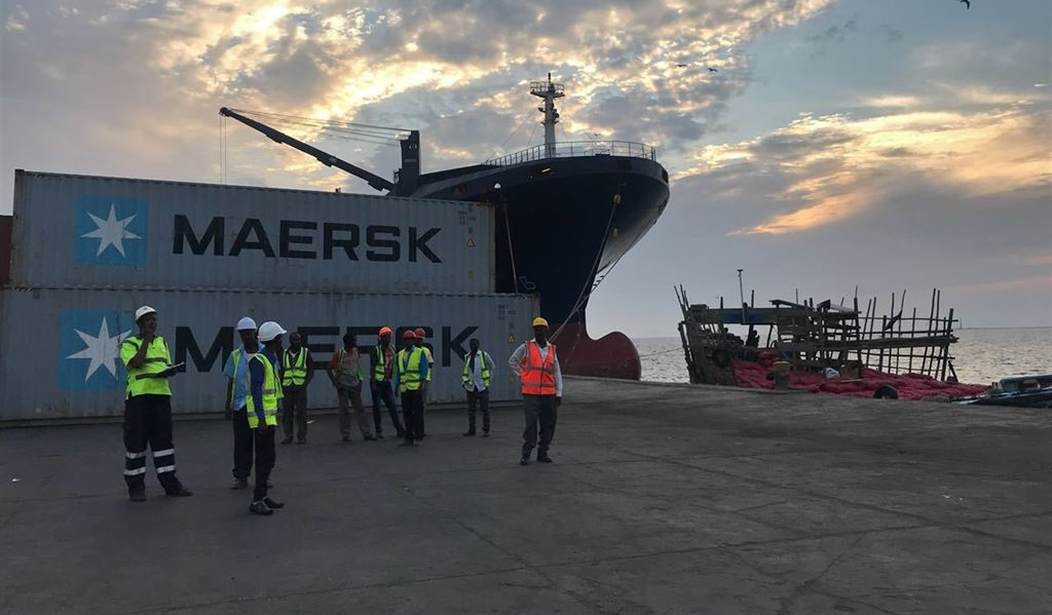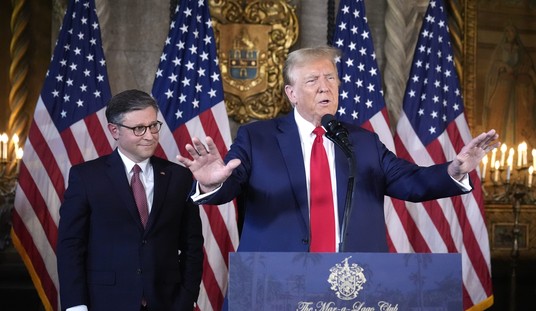On the surface, the supply chain crisis that’s left ships off both U.S. coasts facing a month of waiting before they’re unloaded is caused by bottlenecks following a post-COVID retail flush, rising shipping costs, and a lack of truckers available to unload containers waiting offshore (Redstate covered that angle here). That’s what labor unions told the Daily Mail, anyway, no doubt with the intent to remind everyone of their importance.
But scratch the surface, and supply chain problems are revealed to be much more complicated, driven by bureaucratic intrusion, and effectively look like a mini-war between shippers and carriers, one that the Biden administration and the Democrat-led House of Representatives aren’t interested in working on until at least November, making the problems we’re seeing today extend into the Christmas season.
Part of the problem lies with the Biden administration’s “Executive Order on America’s Supply Chains,” issued on Feb. 24, 2021, which set up a “‘sectoral supply chain assessment‘ of six industrial sectors, including transportation. It requires the secretary of transportation, consulting with the heads of the department’s modal agencies, to submit a report to the president within one year of the executive order that assesses ‘the role of transportation systems in supporting existing supply chains and risks associated with those transportation systems.'”
According to the industry trade outlet FreightWaves in a piece published in March, the EO is vague enough to introduce uncertainty into the system. Couple that with the deadline (February 2022) that several different agencies (The secretaries of commerce, transportation and agriculture are now part of a new supply-chain task force) have to submit reports and it starts to look like the EO could be a direct contributing factor to the current supply chain problems. When government gets involved, it’s not unusual for things to slow down while the industry figures out the new rules in order to comply and avoid fines.
How important is this executive order for freight carriers and their customers? “I think this is going to be a wake-up call and will have a ripple effect across the entire logistics chain,” Jennifer Bisceglie, CEO of Interos, a supply chain monitoring and modeling company, told FreightWaves. “If I’m anywhere in the supply chain I’m taking a look at where I’m connected to this executive order, because it’s ultimately going to affect my business.”
…
Bisceglie [says] the order is vague, which will have an effect on how the industry tries to figure out how to initially respond to it.
“What normally happens in these cases is a slowdown in terms of executing a business strategy, because companies don’t know if that strategy will shift or change depending on the impact” of such a review, she said.
If you are a truckload carrier, for example, Bisceglie said those investment decisions can range from fleet assets to cybersecurity of technology systems that are shared with customers. “Knowing that cyber is a big piece of this, there may be regulatory concerns that [a carrier] may need to be aligned with after the review for which they don’t want to make a big investment in today.”
In addition to the new audits, there’s apparently draft legislation that would overhaul U.S. shipping regulation called the Ocean Shipping Reform Act of 2021 that the Democrat-led House is refusing to work on until after November “once the House has addressed the infrastructure package, voting rights reform, and legislation to bolster Roe v. Wade,” according to a The Journal of Commerce Online. Says quite a bit about the priorities of legislators on the left.
While over 150 companies and trade associations have written a letter to encourage Congress to work on the bill, there’s some concern within the industry that the legislation would only create tension between shippers and regulators and carriers.
“I’m going to be a lot more involved, obviously, in whether or not we should do new legislation; what would be in new legislation if we did it; what would be the downsides or the potential side effects of doing certain kinds of things with the Shipping Act,” [Federal Maritime Commission Chairman Daniel Maffei] said in May shortly after taking over at the agency, adding that the ocean shipping market has changed dramatically since the legislation was passed in 1984.
But where shippers and regulators see potential to upgrade the Shipping Act, the carriers see an effort to place the blame for the snarled ocean market squarely on their shoulders.
“What is crystal clear is that regulating only ocean carriers — or any other single class of supply chain provider — is doomed to fail,” World Shipping Council said in a statement on the legislation. “This approach will not improve supply chain performance, and it risks undermining the regulatory and market structure that has served the nation’s international trade well for many decades.”
The WSC insisted that the government didn’t need to step in, saying that “commercial solutions and market forces” are the sole balm needed to soothe the aches and pains of the current ocean market.
In short, government involving itself and imposing new regulations while also refusing to update existing regulations have played a familiar role in the slow down of a market that is trying to bounce back after COVID stopped the machine.
It’s another example of the leftist mantra: never let a crisis — real or manufactured — go to waste.













Join the conversation as a VIP Member